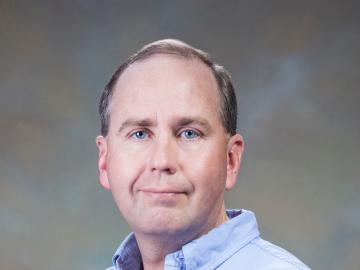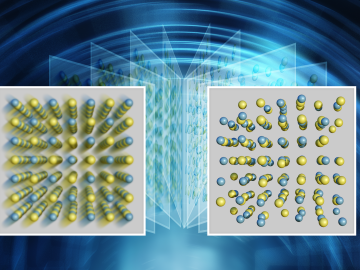
Filter News
Area of Research
- (-) Neutron Science (39)
- (-) Supercomputing (145)
- Advanced Manufacturing (9)
- Biology and Environment (72)
- Biology and Soft Matter (1)
- Building Technologies (2)
- Computational Biology (1)
- Computational Engineering (3)
- Computer Science (16)
- Electricity and Smart Grid (1)
- Energy Science (170)
- Energy Sciences (1)
- Functional Materials for Energy (2)
- Fusion and Fission (14)
- Fusion Energy (3)
- Isotopes (5)
- Materials (145)
- Materials Characterization (2)
- Materials for Computing (24)
- Materials Under Extremes (1)
- Mathematics (1)
- National Security (35)
- Nuclear Science and Technology (3)
- Quantum information Science (8)
- Transportation Systems (2)
News Topics
- (-) Artificial Intelligence (40)
- (-) Chemical Sciences (7)
- (-) Computer Science (99)
- (-) Frontier (33)
- (-) Machine Learning (17)
- (-) Materials (28)
- (-) Microscopy (8)
- (-) Polymers (3)
- (-) Transportation (10)
- 3-D Printing/Advanced Manufacturing (10)
- Advanced Reactors (2)
- Big Data (23)
- Bioenergy (14)
- Biology (16)
- Biomedical (28)
- Biotechnology (2)
- Buildings (4)
- Clean Water (2)
- Composites (1)
- Coronavirus (19)
- Critical Materials (3)
- Cybersecurity (9)
- Energy Storage (14)
- Environment (29)
- Exascale Computing (26)
- Fossil Energy (1)
- Fusion (2)
- Grid (5)
- High-Performance Computing (44)
- Hydropower (1)
- Isotopes (2)
- Materials Science (33)
- Mathematics (2)
- Molten Salt (1)
- Nanotechnology (19)
- National Security (8)
- Neutron Science (122)
- Nuclear Energy (7)
- Partnerships (1)
- Physics (17)
- Quantum Computing (20)
- Quantum Science (30)
- Security (7)
- Simulation (16)
- Software (1)
- Space Exploration (5)
- Summit (43)
Media Contacts

Computing pioneer Jack Dongarra has been elected to the National Academy of Sciences in recognition of his distinguished and continuing achievements in original research.

A trio of new and improved cosmological simulation codes was unveiled in a series of presentations at the annual April Meeting of the American Physical Society in Minneapolis.

Researchers at ORNL have developed a machine-learning inspired software package that provides end-to-end image analysis of electron and scanning probe microscopy images.

A team of researchers from ORNL was recognized by the National Cancer Institute in March for their unique contributions in the fight against cancer.

ORNL has named Michael Parks director of the Computer Science and Mathematics Division within ORNL’s Computing and Computational Sciences Directorate. His hiring became effective March 13.

Scientists have long sought to better understand the “local structure” of materials, meaning the arrangement and activities of the neighboring particles around each atom. In crystals, which are used in electronics and many other applications, most of the atoms form highly ordered lattice patterns that repeat. But not all atoms conform to the pattern.

Environmental scientists at ORNL have recently expanded collaborations with minority-serving institutions and historically Black colleges and universities across the nation to broaden the experiences and skills of student scientists while bringing fresh insights to the national lab’s missions.

Warming a crystal of the mineral fresnoite, ORNL scientists discovered that excitations called phasons carried heat three times farther and faster than phonons, the excitations that usually carry heat through a material.

A study by Oak Ridge National Laboratory researchers has demonstrated how satellites could enable more efficient, secure quantum networks.

Researchers from Yale University and ORNL collaborated on neutron scattering experiments to study hydrogen atom locations and their effects on iron in a compound similar to those commonly used in industrial catalysts.


